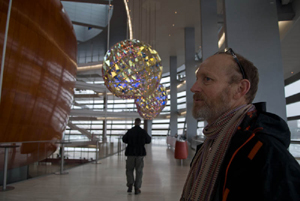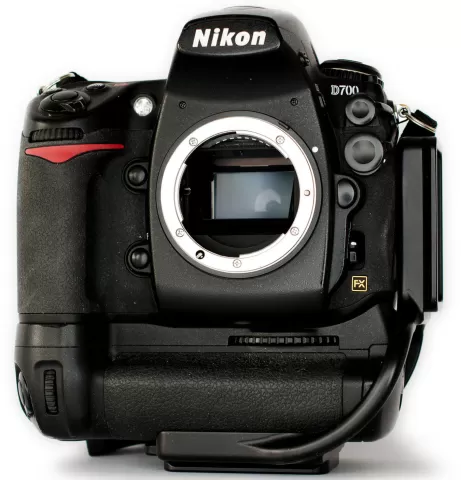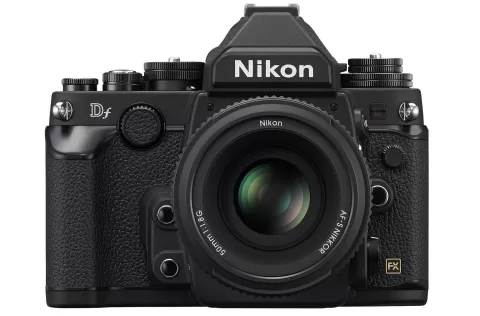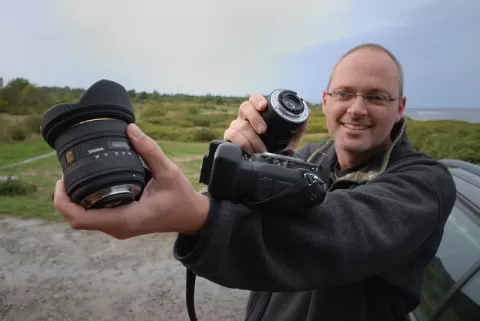I am sure I will keep on taking great pictures with my D200 in spite of Nikon's recent announcement of a D300 and a D3.
Nikon just recently introduced the D300 and the D3, which are perfect replacements for the D200 (which I own) and the D2 (which I have never even held in my hands). The web is buzzing with discussions about replacing the "old" bodies for the new ones, and steaming with joy over the many advantages that the new stuff has over the old. The Nikon folks must be smirking in the land of the rising sun. It's just up their alley -- free and viral advertizing.
Leave no doubt: the new cameras offer significant improvements over the "old" ones. They are improved in almost all respects. And no doubt: had I planned to invest in a Nikon body today, I would seriously consider waiting until November 2007 where these gems are supposed to hit the market.
But then again... I might just have settled with a D200. This more than excellent camera is bound to drop in price real soon now as demand falls and people do as I might have done: wait for the new models. That will open up a market for an extremely competitive camera. The D200 at 60-80% of the current price is a bargain. The D200 will satisfy even the most demanding photographer. I personally haven't nearly used mine to its full potential yet, and keep on taking still better pictures and finding new features.
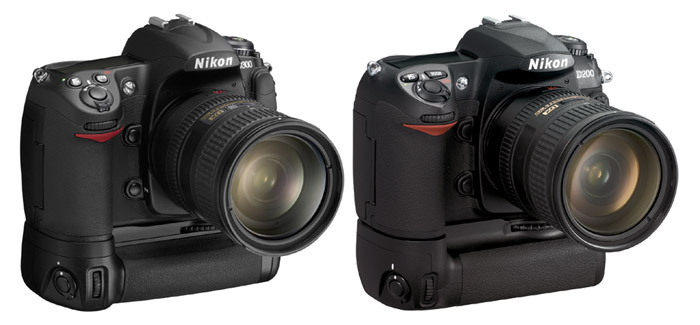
[Nikon press photos]
I see several good reasons to stay:
1) I have not nearly utilized the D200 to its extend yet. After only 15,000 shots I still feel that there is more in this body than I have managed to pry out. I keep finding new ways of getting better images out of this camera, and learn to use some of its many features: image control, bracketing, wireless flash and much more.
2) The D200 has the capacity I need in almost all respects: frame rate, image processing, autofocus, resolution.
3) The new cameras may offer better specs in many ways, and some features might seem like must-have stuff: full frame, live preview, 100% viewfinder, auto-cleaning sensor, color tracking and much more, but none of these facilities have ever been on my most wanted list, and I can easily live without. They are nice-to-have, but not needed.
I will gladly recommend the D200 any day, and I am sure that it can compete with the D300--particularly if the price drops as expected.
Screen envy
Sure the D300 has better resolution... marginally. 12 vs. 10 megapixels is not a huge difference. It will not open a new world to you. Print in 300 dpi and you get about 1" on each side on a 10*15" print. Significant pixels to some, mayby, but not to me. They may even be better quality pixels, but I'm sure a little care taken with the D200 can produce pictures that will print just as fine as the ones from a D300.I love the screen on the D300. The new high resolution 3" LCD is something to look at. That I would love to have, but not for the price of a D300.
The viewfinder might be better too. Haven't looked through a D300, so I cannot tell.
The High ISO performance might be better too, but from what I have read you need to jump to a D3 to really get some umph there. The D300 seems to gain a lot of its improvement from noise reduction.
No, I think my D200 has about 10-20,000 shots in it yet. I'll stick with that for now.
Noise!
Having now seen samples of images from the new bodies--the D3 in particular--I must say that they seem a bit more tempting. The D3 seems to be able to offer unsurpassed noise suppression at high ISO's and Nikon seems to have taken a giant leap forwards with their new CMOS-sensors. I still haven't seen whether the D300 has equally good noise suppression, but I am uite sure that it will be better than the D200, which is not on par with Canon's similar cameras. Now, noise may not seem important to you, but when you see images like these, shot by wedding photographer Cliff Mautner shot at 2500, 3200 and even 6400 ISO, you will have to admit, that high ISO and low noise suddenly becomes very interesting.Update
July 2010: This article was written in 2007 and I'm still shooting my D200. It's now ticking towards 40,000 frames and still doing well.I must admit that I have my eyes on a new D300s body, and that I wouldn't mind an upgrade at all.
Don't misunderstand me. I love the D200, but it's becoming old technology. It was announced late 2005 and started selling for real in early 2006. That's 4 years verging on 5 and a very long time in the world of DSLR's.
I wouldn't mind a larger display, less noise at high ISO's, video and many of the other things that the D300s has over the D200.
Ok, I buckled!
September 2010: So I finally took the step and replaced my old D200 with a D300s. Or rather supplemented my D200 with a D300s, because even though the D200 is battered and has taken 35K shots--and has rust stains (true!), it still ticks on and I use it quite a bit. I sometimes remove the vertical grip and let it replace my D40 as a "compact" backup camera.The D300s is a great camera. As many people have said the D300 was a landmark in Nikon camera history, and the D300s is indeed an s better. The camera is as rugged and well build as the D200. The facilities as good and better in many cases and the image quality is just great.
It's not a D3 or a D700, with their unearthly sensors, but I don't miss being able to shoot at 15,000 ISO. I buy bright lenses in stead. And I'm a DX guy, having invested quite substantially in DX lenses.
So it was a D300s and I'm as happy as can be with my new camera. It's closing in on 3,000 frames already.
